Dear Friends,
The retention ponds at the ISHA property in Wisconsin have attracted an exciting variety of life this year. Today’s blog is an exhibit of some of the creatures that have been seen there lately, as viewed through the lens of local resident Susanne Schroeder.
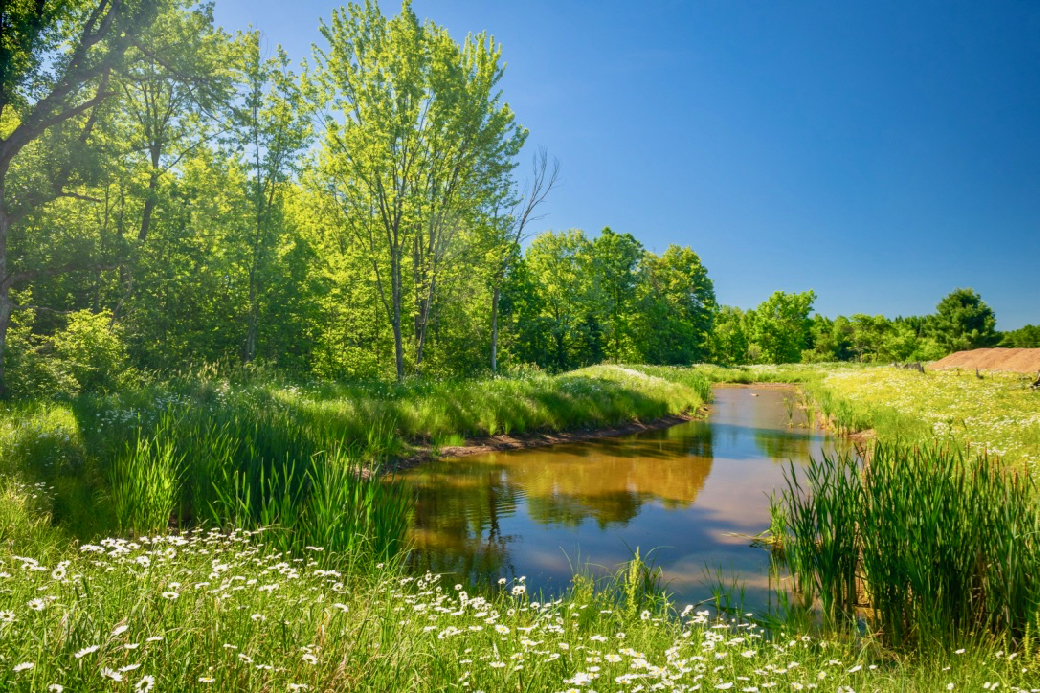
Recently, bear tracks were discovered going right through the large pond near the Meeting Hall parking lot! Black bears are abundant in this part of Wisconsin, and a recent count indicates a population of nearly 29,000 bears in the state. The black bear is the most common and smallest species of bear in North America, and the only wild bear species found in Wisconsin. Adult males weigh from 250-300 pounds and adult females from 120-280 pounds … and they’re fast … a healthy bear can run at nearly 30 mph, almost as fast as the average horse! Black bears generally don’t attack humans unless provoked. Anyone who spends enough time at the ISHA Meeting Hall will be lucky to see one of these amazing animals.
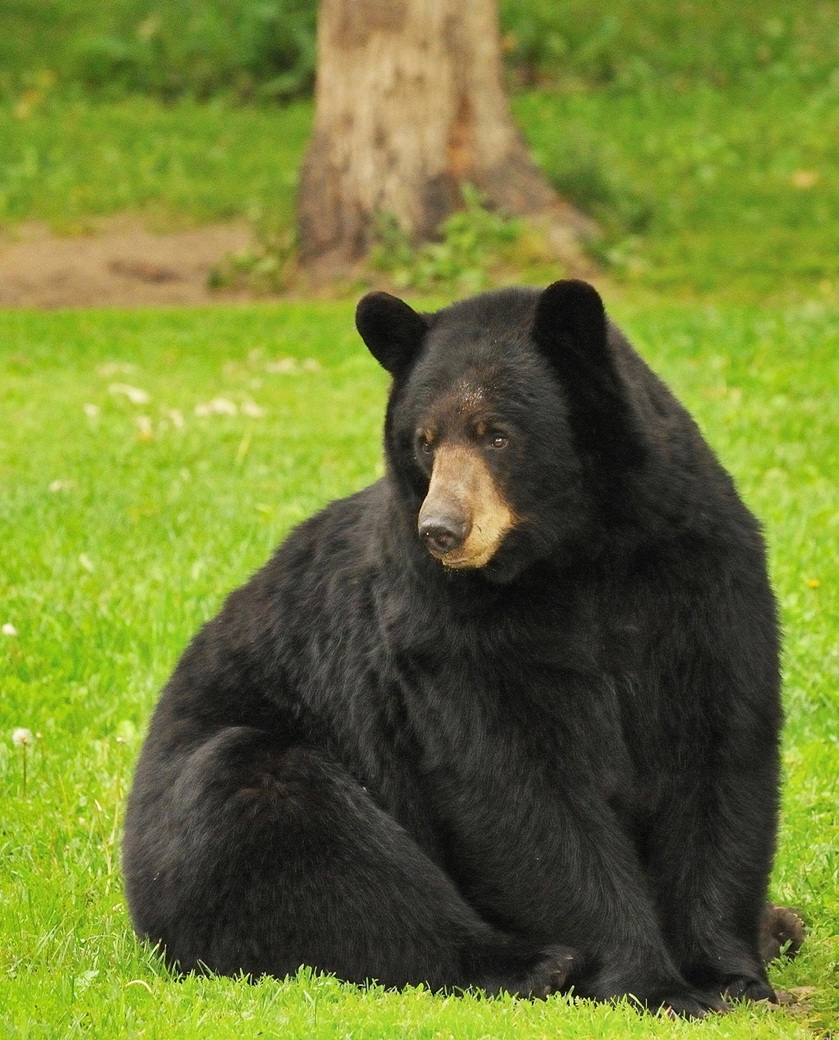
Bear cubs. Triple trouble!
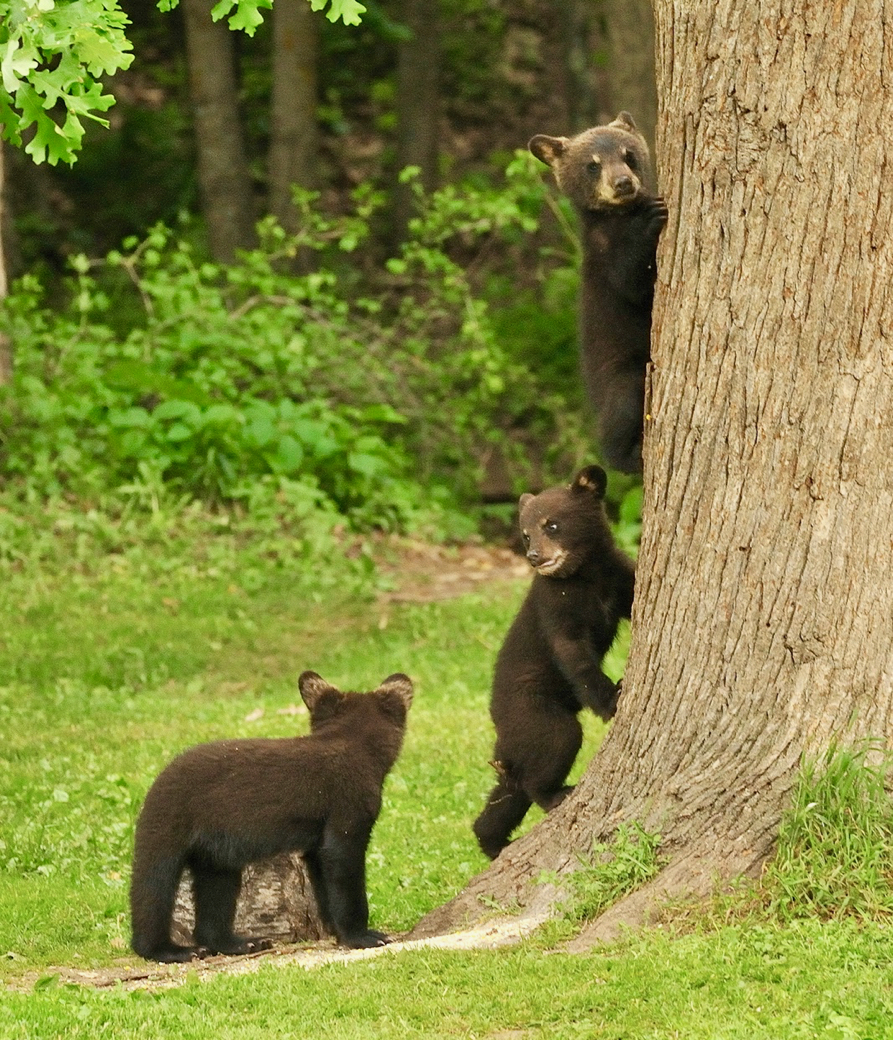
While working on Ishwar’s vegetable garden, another volunteer discovered a wild turkey hen sitting on her eggs not far from the garden. The wild turkey is an upland ground bird that is native to North America. Adult males, called toms or gobblers, average about 17 pounds, and proudly display their feathers of red, purple, green, copper, bronze, and gold iridescence. Females, called hens, average about 9 pounds, and have feathers that are duller overall, in shades of brown and gray. Despite their weight, wild turkeys are agile fliers, although they generally fly close to the ground, and for no more than about a quarter mile. Turkeys have many vocalizations (gobbles, clucks, putts, purrs, yelps, cutts, whines, cackles, and kee-kees). The gobble can carry for up to a mile, and visitors in Bruce can expect to see (and hear) these handsome birds foraging along the edge of the woods.

The water level in the retention pond has been fairly low this year, but has still been full of tadpoles. Tadpoles develop into frogs and toads, and the garden workers have reported being serenaded all day by the melodic calls of tree frogs. American bullfrogs, such as in the photo below, seem to have also found happy homes in our retention ponds. These large frogs have an olive-green back and sides blotched with brownish markings and a whitish belly spotted with yellow or grey. They prefer permanent water bodies, such as swamps, ponds, and lakes, where they are typically seen along the water’s edge. The call of the bullfrog is so deep and vibrant that it resembles the mooing of a cow, thus the name. Only males emit this “jug-o-rum” bellow, and their choruses can be heard during the day or night. The largest of all North American frogs, they can grow 8 inches long and weigh up to 1.5 pounds. These giants can be seen along the water’s edge by stealthy visitors to the property.

Also recently seen in the retention pond is the Painted Turtle (here with blooming iris in the background). The painted turtle is the most widespread native turtle of North America. It lives in slow-moving fresh waters, from southern Canada to Louisiana and northern Mexico, and from the Atlantic to the Pacific. A cold-blooded reptile, the painted turtle regulates its temperature through its environment, mostly by basking in the sun. Turtles bask on a variety of objects, including logs. And adults have been known to live for more than 55 years … more evidence that afternoon naps are beneficial!
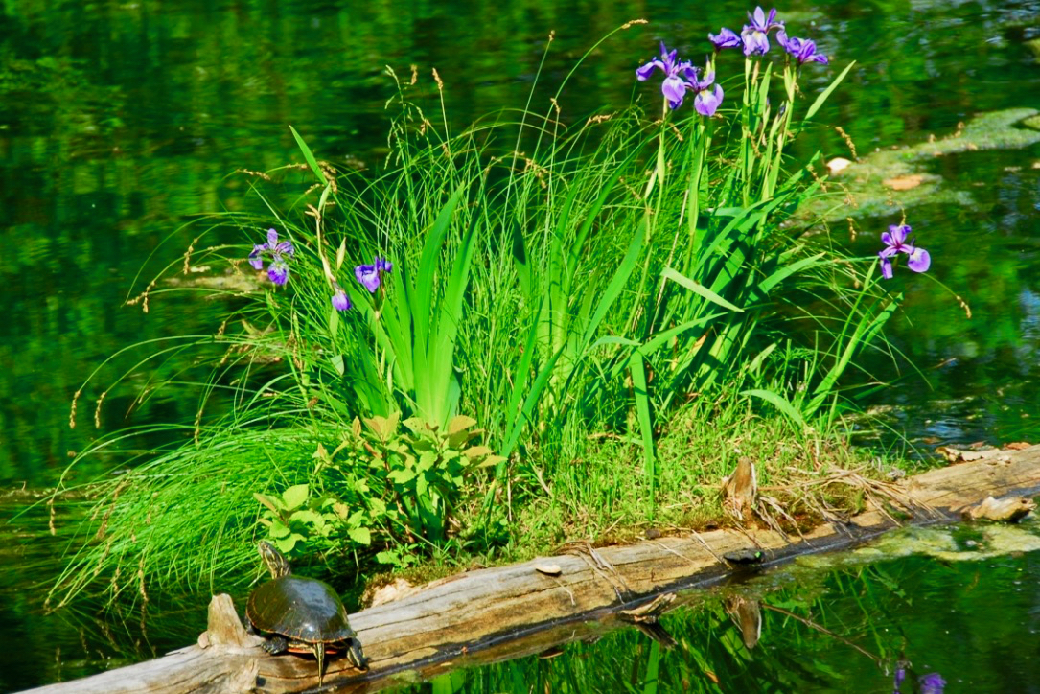
This lovely turtle was photographed on the driveway near the ponds. It is an uncommon species known as the wood turtle. During the spring, the wood turtle is active during the daytime, and will almost always be found within several hundred yards of a stream. The wood turtle is a speedster (by turtle standards) and can travel at a blistering speed of 0.20 mph (3.5 inches per second). It also travels long distances (again, for a turtle) as it forages for food. In one study, the average distance covered in a 24-hour period was 354 feet! Look for these beauties along the stream that is just west of the retention ponds.
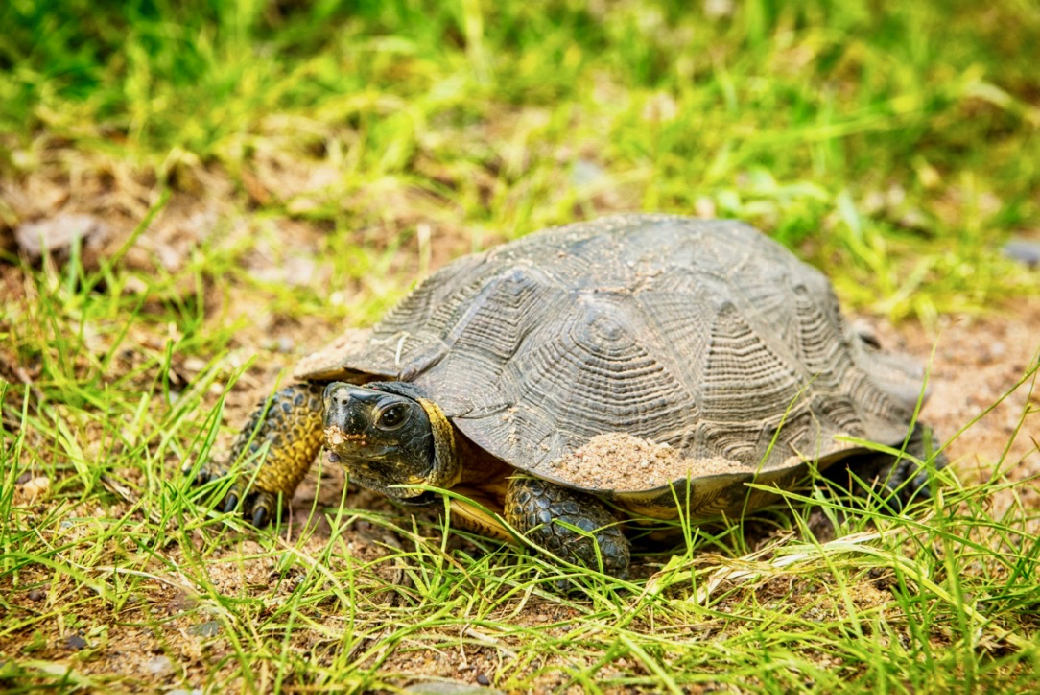
The ponds are rich with dragonflies, such as this gorgeous widow skimmer. Dragonflies are powerful and agile fliers, capable of moving in any direction, and changing direction suddenly. In flight, adults can propel itself in all six directions: upward, downward, forward, back, and to left and right. Dragonflies have been around for a long time; fossils of huge dragonfly ancestors are found in rocks that are 325 million years old. These monstrous insects had wingspans of up to 30 inches! Fortunately for us, our dragonflies are only a few inches wide.
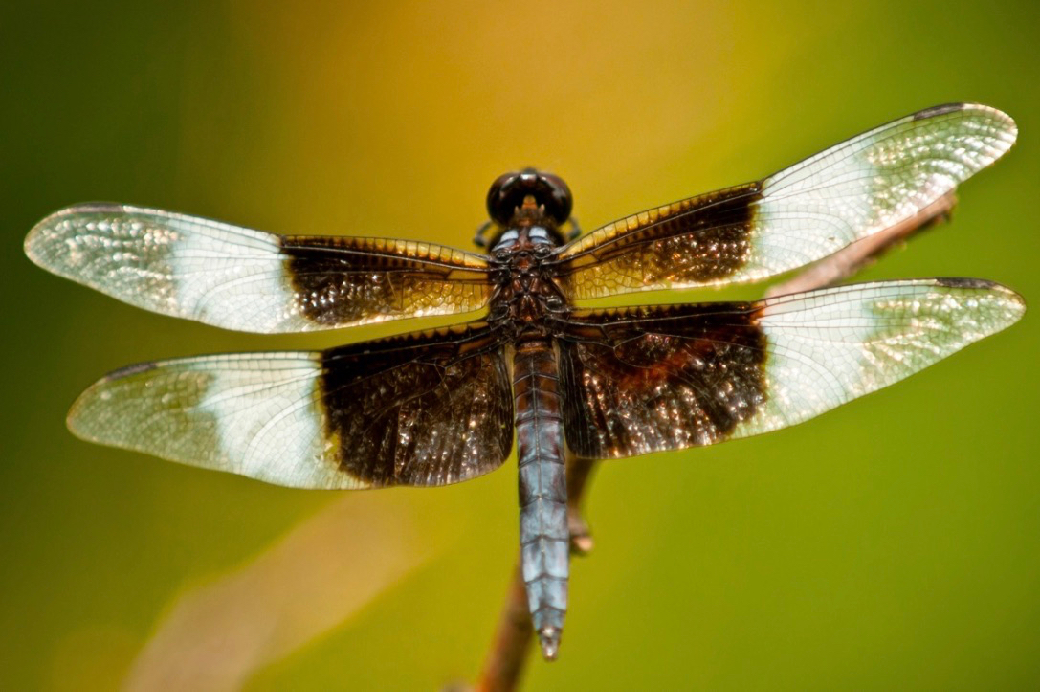

Commonly confused with dragonflies, damselflies have slender bodies, fly slower, and fold their wings over the abdomens when perched. This beauty is called the civil bluet damselfly. They require clean water to reproduce, and so their presence around our pond indicates that it is unpolluted.

Raccoons are common in the Bruce area. They are known for their facial masks, their highly sensitive front paws, and their ringed tails. They are also noted for their intelligence, with studies showing that they are able to remember the solutions to tasks for three years. They are nocturnal (forage at night) and omnivorous (eat everything). This youngster was seen in Susanne’s backyard.

Whitetail deer are one of the most common wild animals in Wisconsin. Many have become accustomed to people, and will comfortably forage around homes, such as this attentive fawn. Their long, skinny legs allow adults to jump fences that are 9 feet tall! Let’s hope that they don’t discover the vegetable garden.

Blue iris blooming in the retention pond.
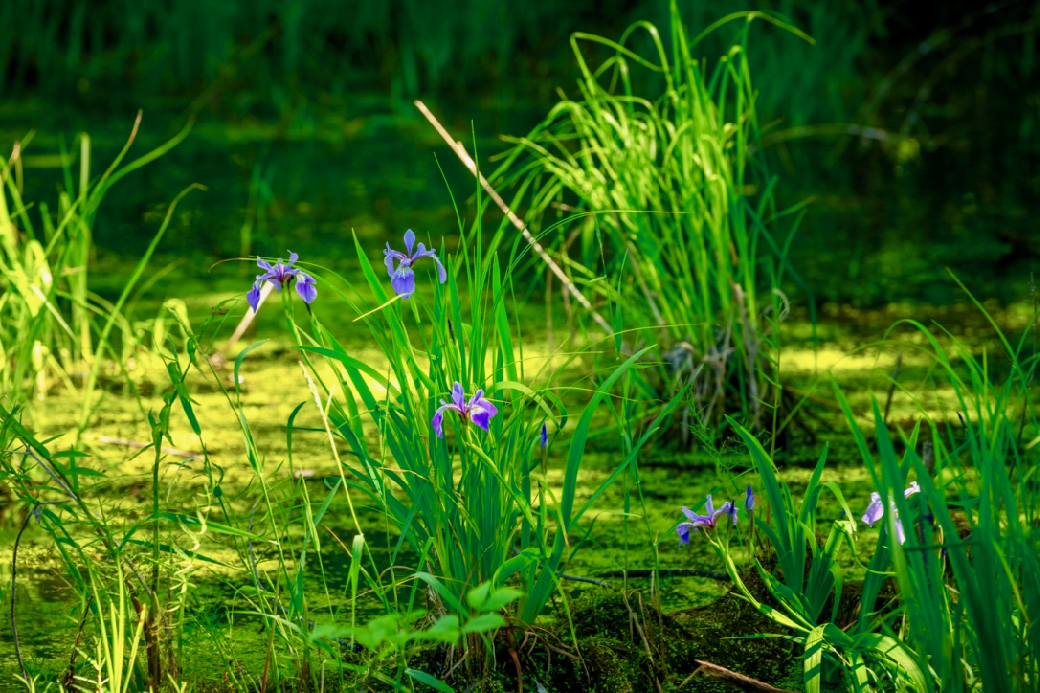
Wild Columbine is also growing by the ponds.
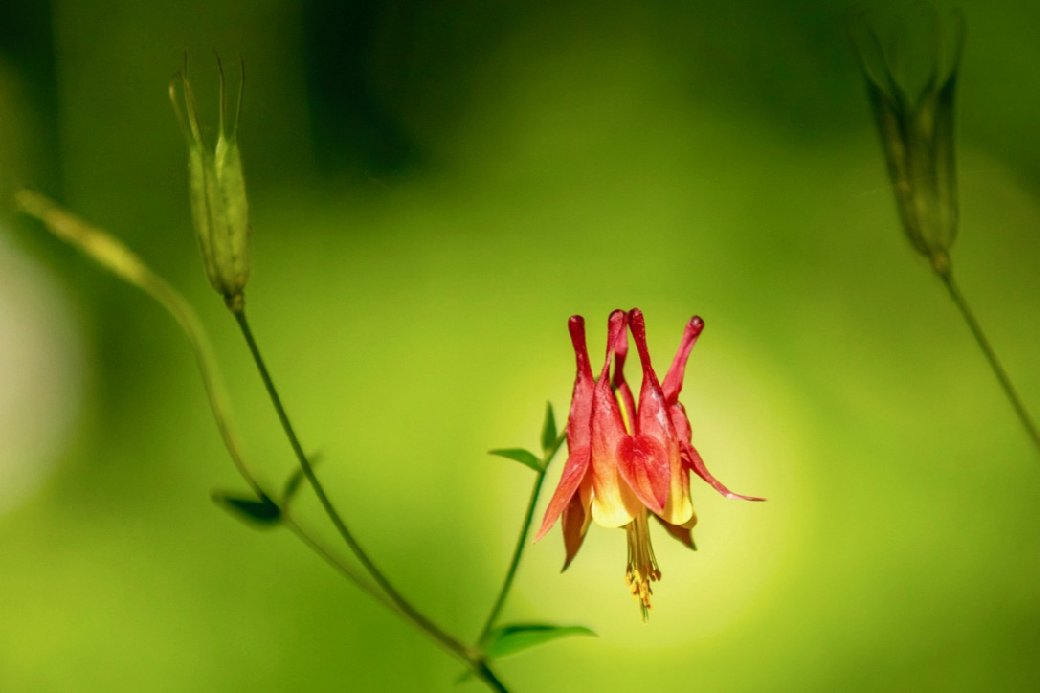
These native arrowroots were transplanted into the pond last fall, and are now thriving in the clear water.
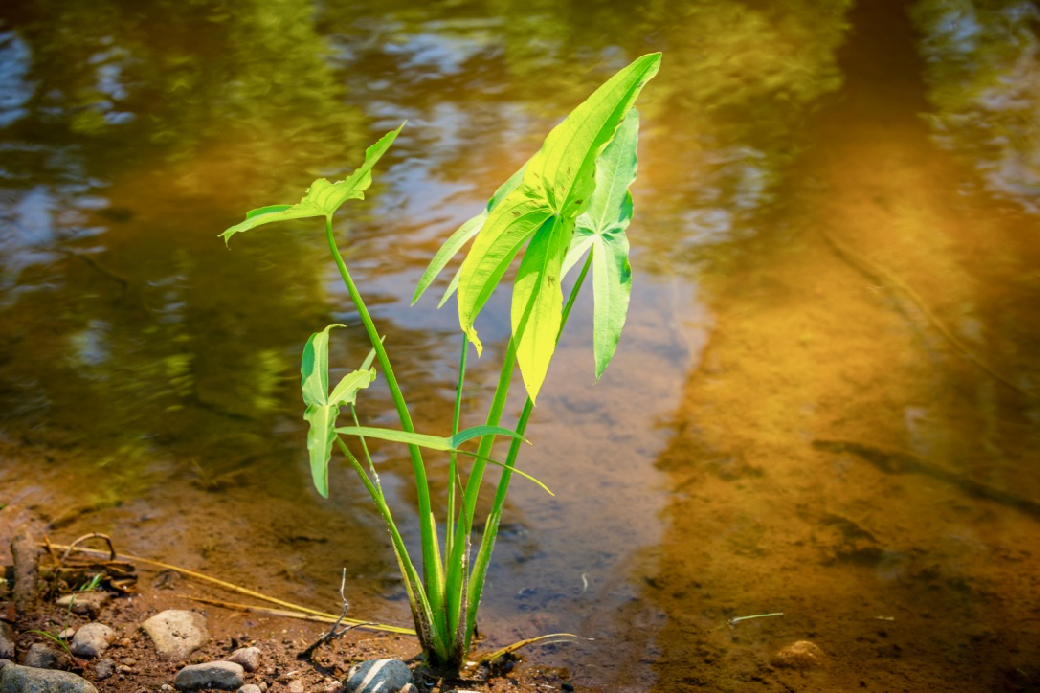
If you can visit the ISHA property this summer, you may be lucky enough to have your own encounters with some of our animal neighbors.
With warmest regards,
Paul Bauer
Chair of ISHA Building & Fund-Raising Committee
Paul Bauer
Chair of ISHA Building & Fund-Raising Committee
